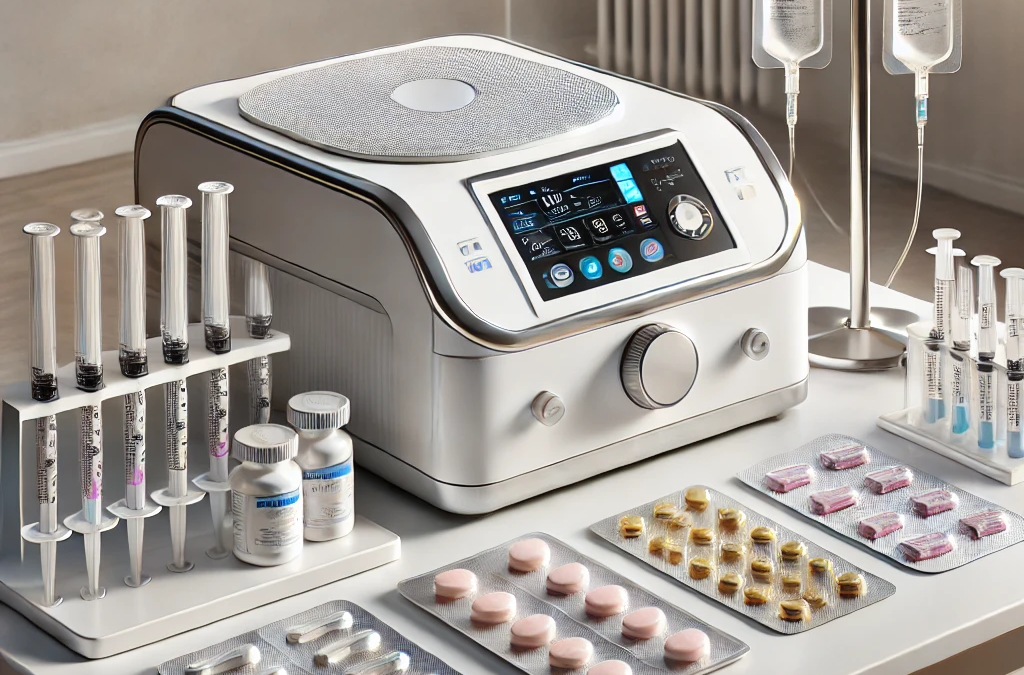Pain management is a critical part of modern medicine, with a wide range of treatments available to address acute and chronic pain. One lesser-known, but highly effective method is iontophoresis, a non-invasive technique that delivers medication through the skin using a mild electrical current.
Understanding how iontophoresis works and how it compares to other drug delivery methods can help patients and healthcare providers make informed decisions about pain management strategies.
How Iontophoresis Works for Pain Relief
Iontophoresis relies on the principles of electromigration and electroosmosis to transport charged drug molecules through the skin and into underlying tissues. By applying a small electrical current to a medicated pad placed on the skin, iontophoresis pushes ionized drug particles directly into the bloodstream or target tissue. This allows for localized treatment, meaning the medication is delivered precisely where it is needed without affecting the rest of the body.
Commonly used pain relief medications in iontophoresis include anti-inflammatory drugs like dexamethasone, local anesthetics such as lidocaine, and even muscle relaxants. Because the treatment is non-invasive and painless aside from a mild tingling sensation, it is often preferred by patients who want to avoid injections or oral medications.
Iontophoresis vs. Oral Medications
Traditional pain relief methods often start with oral medications like NSAIDs (non-steroidal anti-inflammatory drugs) or opioids. While these drugs can be effective, they come with significant drawbacks, including gastrointestinal irritation, systemic side effects, and the risk of dependency in the case of opioids.
Iontophoresis offers a targeted approach, delivering pain relief medication directly to the affected area rather than circulating it throughout the body. This localized treatment minimizes systemic side effects, reducing the risk of stomach ulcers, kidney strain, or liver damage that can occur with the long-term use of oral pain medications.
Another key advantage of iontophoresis is its ability to bypass the digestive system. Many medications lose potency when processed by the liver in a phenomenon known as the first-pass effect. By delivering drugs transdermally, iontophoresis ensures that more of the active ingredient reaches the target area in an effective concentration.
Iontophoresis vs. Injections
Injections, such as corticosteroid or anesthetic injections, are another common method of delivering pain-relief medications. While injections provide rapid and concentrated relief, they also come with risks such as infection, tissue damage, and patient discomfort.
Iontophoresis provides a needle-free alternative that eliminates the anxiety and pain associated with injections. It is particularly useful for patients who require repeated treatments, as frequent injections can lead to tissue breakdown and long-term complications. Additionally, iontophoresis allows for a more gradual absorption of medication, avoiding the sharp peaks and drops in drug levels that injections sometimes cause.
One potential drawback of iontophoresis compared to injections is that it may take multiple sessions to achieve the same level of pain relief. However, for patients who prefer a gentler and non-invasive approach, the trade-off is often worth it.
Iontophoresis vs. Topical Creams and Patches
Topical pain relief options, such as creams, gels, and medicated patches, are commonly used to treat localized pain. These treatments work by allowing drugs to pass through the skin barrier and into the bloodstream or muscle tissues.
One limitation of traditional topical treatments is that absorption can be inconsistent, as the skin acts as a natural barrier to many drug molecules. Factors like skin thickness, hydration levels, and temperature can all affect how well a drug penetrates the skin. Many topical pain medications also rely on chemical enhancers to increase absorption, which can sometimes cause irritation or allergic reactions.
Iontophoresis enhances drug delivery by using electrical energy to actively push medication through the skin, overcoming some of the limitations of passive absorption. This results in a more controlled and efficient uptake of the drug, making it a more reliable option than standard topical treatments.
However, unlike patches or creams that can be applied at home, iontophoresis typically requires specialized equipment and administration by a healthcare professional. This can make it less convenient for long-term, daily pain management outside of clinical settings.
Iontophoresis vs. Transdermal Drug Patches
Transdermal patches, such as fentanyl patches for severe pain or lidocaine patches for localized relief, provide continuous drug delivery over an extended period. These patches are convenient and easy to use, allowing patients to manage pain without frequent dosing.
The downside of transdermal patches is that they can only deliver certain types of drugs. Because passive absorption is the primary mechanism, only lipid-soluble medications with small molecular sizes can effectively pass through the skin. Many water-soluble or larger drug molecules cannot be efficiently delivered using standard transdermal patches.
Iontophoresis expands the range of medications that can be delivered transdermally, including drugs that typically wouldn’t penetrate the skin on their own. This makes it a more versatile option for pain management, particularly for patients who do not respond well to conventional patches.
Who Can Benefit from Iontophoresis for Pain Relief?
Iontophoresis is commonly used in physical therapy and sports medicine to treat musculoskeletal pain, tendonitis, bursitis, and inflammatory joint conditions. Athletes often use iontophoresis to accelerate recovery and reduce pain without resorting to injections or long-term oral medication use.
Patients with chronic pain conditions, such as arthritis or neuropathic pain, may also benefit from iontophoresis, particularly if they experience side effects from oral medications. Additionally, individuals who are needle-phobic or prone to gastrointestinal issues from NSAIDs may find iontophoresis to be a better alternative.
The Future of Iontophoresis in Pain Management
As technology advances, iontophoresis is becoming more accessible and efficient. Researchers are exploring wearable iontophoretic devices that patients can use at home that allow for more convenient long-term treatment. Innovations in drug formulation and electrode design are also improving the effectiveness of this drug delivery method, making it an increasingly attractive option for pain management.

